Last week, Richard Branson gave a boost to tech tycoon Elon Musk’s vision of a futuristic transport system. Hyperloop One is the frontrunner among several companies working on plans for magnetically propelled ground shuttles capable of keeping pace with commercial airliners. Branson announced an investment of an undisclosed sum in the company, which took its total funding to £186m.
Musk first outlined his plans, entitled Hyperloop Alpha, in 2013, when he said the system could provide a safer, faster and more convenient mode of long-distance transport than cars and trains, while also being low cost, sustainable, immune to adverse weather and earthquake-resistant.
He went on to describe a system of tubes elevated on columns running the 381 miles between Los Angeles and San Francisco, with journey times cut from a driving time of six hours and 30 minutes to 35 minutes. In Silicon Valley style, he “open-sourced” the project, inviting others to take up its development.
Earlier this year, at Hyperloop One’s test site in Nevada, they carried out a trial using a full-size pod that reached 190mph, although the company is aiming for top speeds of 600mph-plus for the passenger vehicle.
Meanwhile, Musk, who is not directly involved with Hyperloop One, has taken his vision underground. In July, he claimed his separate venture The Boring Company had secured verbal agreement from the US government to build an underground loop from New York to Washington DC. The White House described the exchange only as a “promising conversation”.
As founder of the internet payment system PayPal, electric carmaker Tesla and rocket builder SpaceX, Musk has earned the right to be taken seriously. However, Branson’s financial involvement has failed to quieten the critics who argue none of the players in the hyperloop field has taken proper account of the size of the enormous hurdles facing anyone seeking to make the technology a reality.
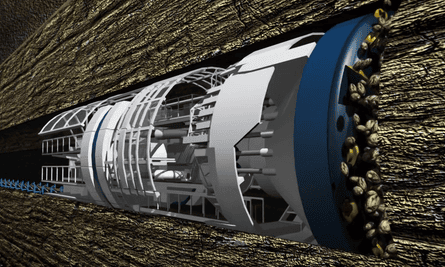
Technology troubles
While hyperloop might look revolutionary, some of its core concepts have a long pedigree. Musk’s plans describe capsules being fitted with electric compressor fans to transfer high-pressure air to the back of the vessel and travelling through low pressure tubes.
Maglev transport systems using magnetic levitation have long been used in Japan, South Korea and China. Pneumatic tube transport systems used to deliver messages and small parcels were developed during the 19th century. These use air-compressors attached to the ends of tubes to create a partial vacuum that pulls cargo along. The short-lived Beach Pneumatic Transit system used compressed air to move a carriage along a 95-metre tunnel in Manhattan between 1870 and 1873.
Of course, a hyperloop that safely carries people over long distances is an entirely different proposition and raises major engineering challenges. For example, the rapid compression of air required to drive the capsules would produce a lot of heat. Air conditioning could deal with this, but would require wider, more expensive tubes or tunnels.
Engineers also say the pipes would be subjected to significant thermal expansion under direct sunlight, especially in the Californian desert. A 100km pipe could expand by as much as 50 metres in length, potentially undermining the system by allowing air in. High-speed railways cope with this by having rails that overlap at the ends, but this isn’t possible with hyperloop. Musk’s solution is to use expansion joints, but the LA to San Francisco route would require thousands of them. This would produce a large maintenance workload to prevent a potentially critical failure.
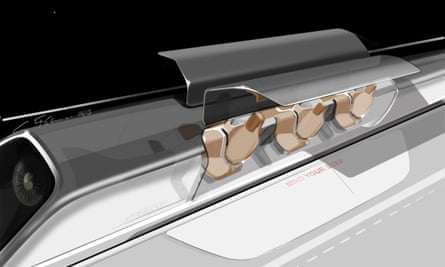
Safety concerns
Safety is the top priority for any transport system and engineers note that Musk’s hyperloop pronouncements have so far not been big on how it would handle glitches without fatalities. “It’s an exciting engineering challenge, but not much has been released on the safety case,” says Philippa Oldham, head of technology and manufacturing at Britain’s Institution of Mechanical Engineers. “The devil will be in the detail. We really need to know a lot more about the safety features and what would happen if something went wrong.”
“As something entirely new, it will require an intense amount of testing, possibly even more than for the pharmaceutical industry, where trials can take 10, 15 or 20 years,” says Adie Tomer, an infrastructure expert at the Washington DC-based Brookings Institution, a public policy thinktank.
Even if it can be shown to be safe, hyperloop also needs to be relatively comfortable. “Some people have called it the ‘barf tube’, because being accelerated at high speeds and then decelerated again is likely to make people sick,” says David Bailey, professor of industry at Aston Business School in Birmingham. This depends on the rate of acceleration. Passengers on a typical commercial aircraft experience a G-force of about 0.4 when taking off. Musk says hyperloop capsules could reach a top speed of 760mph in around 70 seconds, which would see passengers experience 0.5G.
We also experience lateral G-forces when going around a bend. To restrict these to 0.5G, the turning radius would be about 23.5km at 670mph. This requires routes to be kept almost straight or the capsules to slow right down when curves are necessary. Even then some passengers may still feel nauseous.
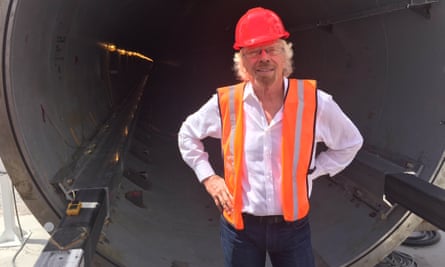
The Nimby factor
Those who have followed the twists and turns of selecting the route for HS2, England’s second high-speed rail network, planned to link London to Birmingham, Manchester and Leeds, will know that getting people to agree where to put overground infrastructure in densely populated countries is challenging. “In a crowded country where land is expensive, the potential problems for hyperloop would be like those of HS2 on steroids.”
Such projects have to produce environmental impact assessments, which can take years to write. Work on a 16.2 mile extension to Washington DC’s subway began last year, having first been proposed in 1996. The project was long delayed by legal claims that it would undermine populations of Hay’s spring amphipod, a tiny protected crustacean.
People also tend to be pretty vociferous in their opposition to plans to demolish their homes for new transport systems to help others. That means they require solid, long-term support, which is difficult to get from politicians focused on elections.
“Finding and then obtaining the right land for infrastructure projects of this scale is a lot trickier than people realise,” says Tomer. “It’s what drives a lot of projects into the ground, whether because of the environmental protection of endangered species or people not wanting to give up their land and making the project take more expensive alternative routes.”
These complications probably explain why Musk’s more recent statements on hyperloop have described an underground system.
Consumer fears
As anyone with a fear of flying can attest, consumers’ perception of risk is more important than actual risk when it comes to passengers’ choice of modes of transport. About 30% of people admit to some fear of flying, yet mile for mile, driving a car is 100 times more deadly. Even a traditional train is twice as likely to be fatal.
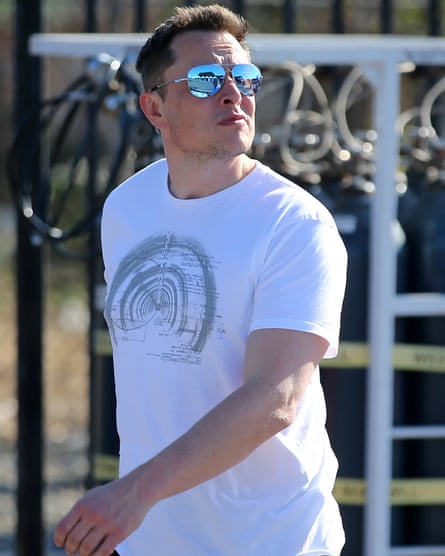
The hyperloop concept is too new to have been seriously considered by consumers, but a survey published by the American Automobile Association in March found that 78% of Americans reported that they would be afraid to get into a driverless car, and 54% would feel less safe if they had to share the road with them. “We know from consumer research that people are scared to get into driverless cars,” says Tomer. “Hyperloop involves being suspended in the air or being underground in a tunnel and moving at hundreds of miles per hour in a completely new, unproved technology. I’m no behavioural economist but in terms of consumer perception of fear, it is driverless cars on overdrive.”
A high price to pay
Passengers are not the only ones who are risk-averse. So too are investors, especially when projects cost many billions of dollars. Musk put the cost of his original 2013 overland plan between LA and San Francisco at $6bn.
The price tag has multiplied many times since then, however, with Musk’s newer focus on an underground hyperloop. A 2.5 mile extension to the LA subway currently under construction will come in at around $1bn per mile, for example.
Musk believes he can cut the cost of tunnelling tenfold. He claims this will be possible by using narrow tunnels with diameters as small as 12ft, increasing the power of tunnelling machines and designing them to tunnel and reinforce the walls simultaneously, rather than alternating between the two. Most civil engineers believe Musk’s ambitious estimates to be unrealistic. One told Wired magazine that he placed them “in the bullshit category”.
Narrower tunnels mean fewer passengers or capsules running closer together, which may increase risks or perceptions of it. “If they make the tunnels cheaper by making them smaller, then you’re restricting capacity,” says Bailey. “If you run them very frequently, you have greater safety concerns about what happens if something goes wrong and shuts down.”

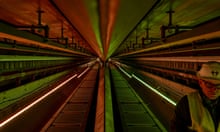
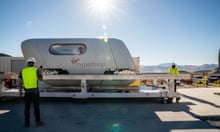



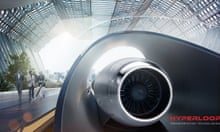


Comments (…)
Sign in or create your Guardian account to join the discussion